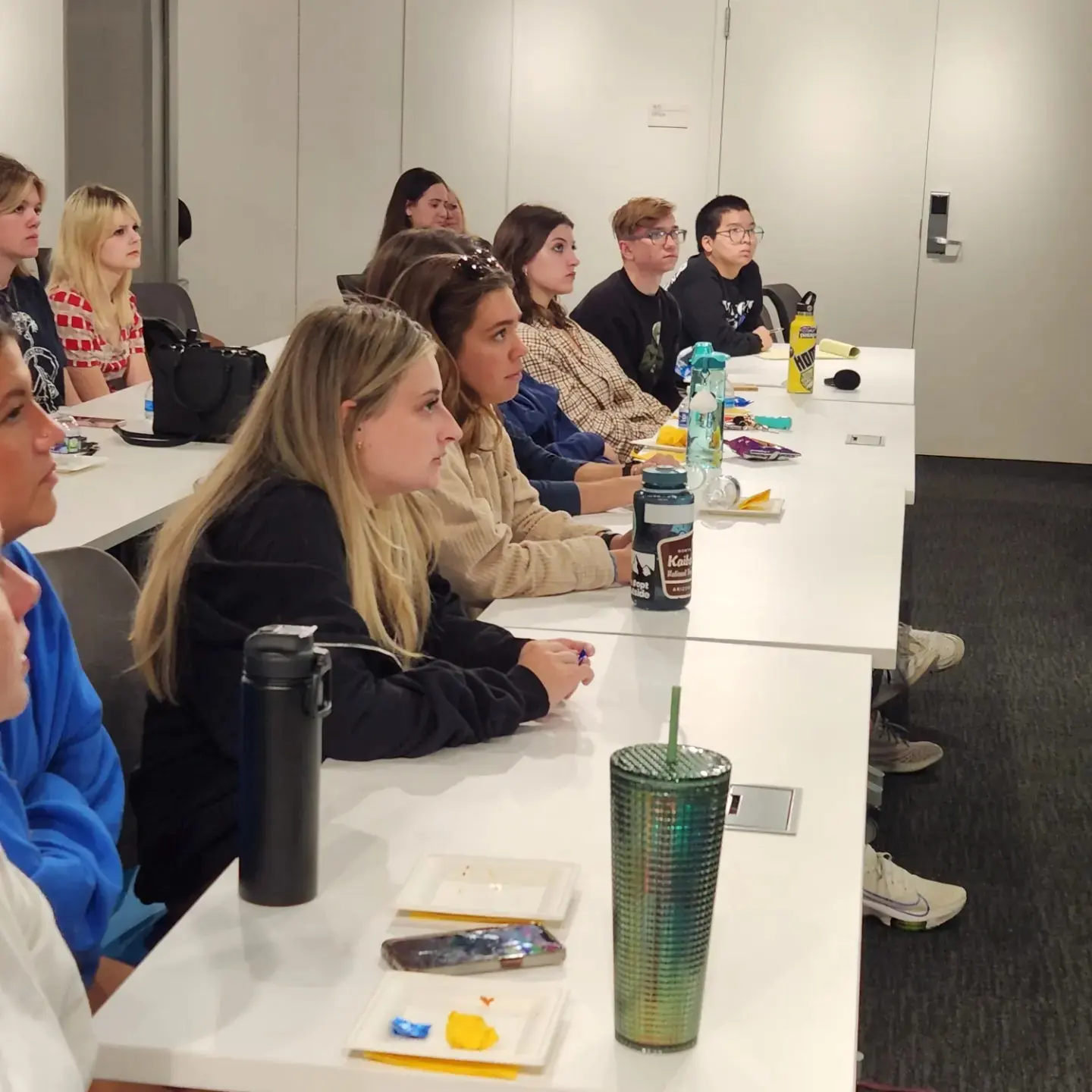Eric Garner, a teacher who was able to shield his students from harm during the 2018 Parkland, Florida, high school shooting, urged journalism and media students to cover tragedies with empathy during an interactive discussion at the May 4 Visitors Center Reflection Gallery on Oct. 25.
Garner, the TV production teacher at Marjory Stoneman Douglas (MSD) High School where the 2018 massacre occurred, has been credited for having a calm demeanor while shielding 54 students for more than an hour as the gunman killed 17 people and wounded several others. He was named the MSD teacher of the year in 2021-22.
‚ÄúYou have to have empathy,‚ÄĚ said Garner, who spoke virtually to a packed room of students. ‚ÄúIf you haven‚Äôt taken a nonverbal communication (course) this is a great time to take it because you have to be able to read the room. It comes down to intuition and experience. You‚Äôre probably going to make mistakes.‚ÄĚ
First-year student Ella Katona said the interactive discussion with Garner was an extremely important experience.
‚ÄúWe really didn‚Äôt talk about school shootings in high school,‚ÄĚ said Katona, a journalism major from Pittsburgh. ‚ÄúThis discussion will help us open our eyes to how professional journalists should be more empathetic.‚ÄĚ 
Stephanie D. Smith, associate professor in the School of Media and Journalism, said there are lessons to be learned from the experiences of the Marjory Stoneman Douglas students and faculty.
"Tragically, school shootings have become a frightening part of the American educational experience. Students, parents, teachers and administrators are only too aware that schools are especially vulnerable,‚ÄĚ said Smith, who also teaches in the School of Communication Studies and the College of Communication and Information (CCI). ‚ÄúAs media consumers, we have come to expect breaking news about school shootings on what seems like a weekly basis. But what happens when the media leave the scene ‚ÄĒ when the shootings are no longer part of headline news? How do students, parents, teachers, staff and administrators move forward? What can every school learn from the tragic experiences of schools like Marjory Stoneman Douglas and its brave students and teachers?"
The event was hosted by the College of Communication and Information‚Äôs media advocacy minor program and the School of Communication Studies ‚Äúbecause there are unique and essential considerations for student media in these situations,‚ÄĚ said Smith, a faculty coordinator for the media advocacy minor.
She gave the following examples of considerations for student media:
- How do student journalists cover terrible news when it happens in their schools and to their peers?
- What happens when students and student journalists become activists for gun control? Can they maintain journalistic objectivity? And should we expect them to?
‚ÄúThese are some of the questions we believe are worth exploring, especially here at Kent State, since we understand only too well the multigenerational impact of school shootings,‚ÄĚ Smith said. ‚ÄúKent State's own history is also why the May 4 Visitors Center is co-sponsoring this event with CCI."
Bailey Fair, a first-year digital media major, said interacting with Garner had a great impact on her.
‚ÄúI thought this was going to just be another sad story,‚ÄĚ said Fair, a Butler County, Pennsylvania, resident. ‚ÄúBut hearing someone who was there was a lot more impactful.‚ÄĚ
For more information about the College of Communications and Information, go to /cci.
For more information about the School of Communication Studies, go to /comm.
For information about the May 4 Visitors Center, go to /may4visitorscenter.

